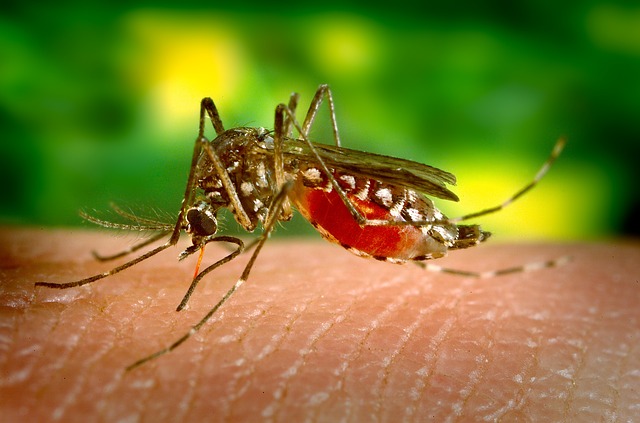
“Mosquitoes are bloodsucking insects, and they typically stay within a boundary of 106.7 meters after feeding because their bodies become heavy after sucking blood from humans. Therefore, any blood-engorged mosquitoes found in the closed space of a crime scene could be used to track suspects.” (image: Pixabay)
UIJEONGBU, South Korea, July 12 (Korea Bizwire) – According to a research paper entitled, ‘Analysis of Human DNA Recovered from Mosquitoes’ written by Kim Young-sam, a medical examiner from the Forensic Investigation Team at the Gyeonggi Bukbu Provincial Policy Agency, the use of mosquito blood to identify human DNA of possible criminals is being introduced as a new forensic investigation tool in Korea.
Kim presented his research results at the Korean Police Forensic Science Conference, which was held earlier this month.
“We tried to retrieve human genomes from the blood of mosquitoes, and we were able to accurately identify individuals based on the components of collected blood from six mosquitoes,” said Kim. “Mosquitoes are bloodsucking insects, and they typically stay within a boundary of 106.7 meters after feeding because their bodies become heavy after sucking blood from humans. Therefore, any blood-engorged mosquitoes found in the closed space of a crime scene could be used to track suspects.”
There have already been instances where police used mosquitoes at a crime scene to obtain a suspect’s DNA.
In January 2014, a husband got into a fight with his wife at a motel in Paju, Gyeonggi Province, regarding a divorce settlement, and ended up beating her to death. The police found mosquito blood on the door frame of a motel room, and asked the National Forensic Service to identify the source of the blood using DNA profiling.
The blood, unfortunately, belonged to a male guest who stayed in the same room before the murder happened.
However, the insect investigation method has proven effective in other countries.
In 2005, Italian police used the blood from a mosquito to identify and then arrest a suspect who murdered a woman on a beach, and in Finland, a mosquito found in an abandoned car was caught and its blood studied to track down a suspect.
“Criminals are becoming smarter and they don’t leave fingerprints at the scene most of the time. Hopefully, this new investigation method will be helpful in arresting suspects of violent crimes,” said Kim.
By Nonnie Kim (nkim@koreabizwire.com)






